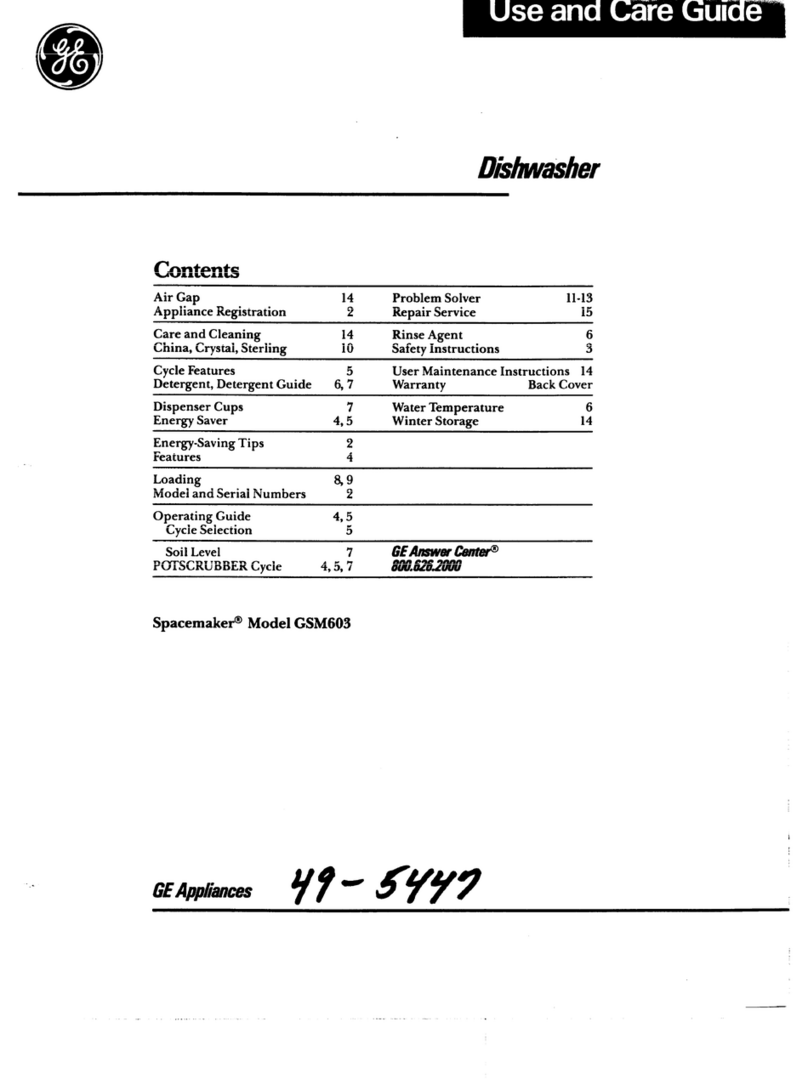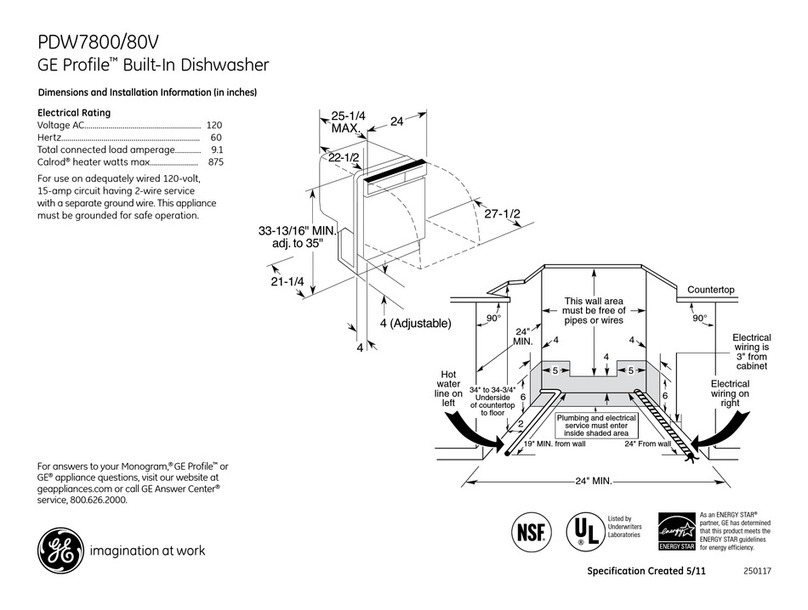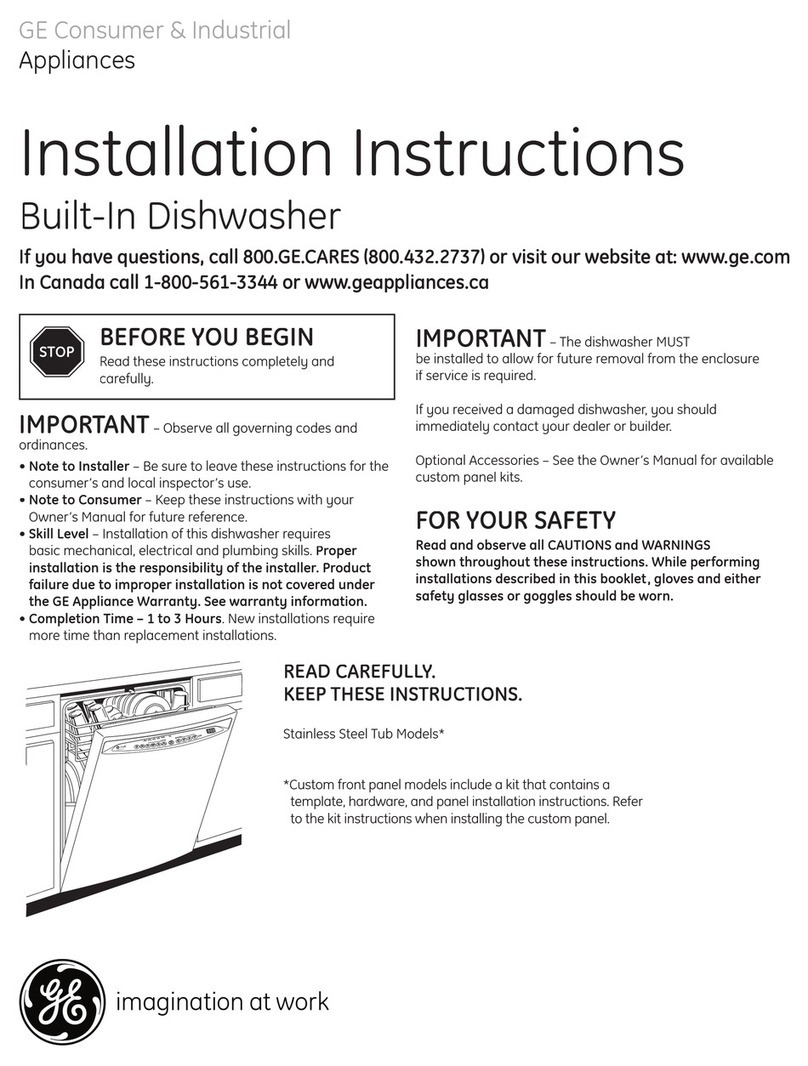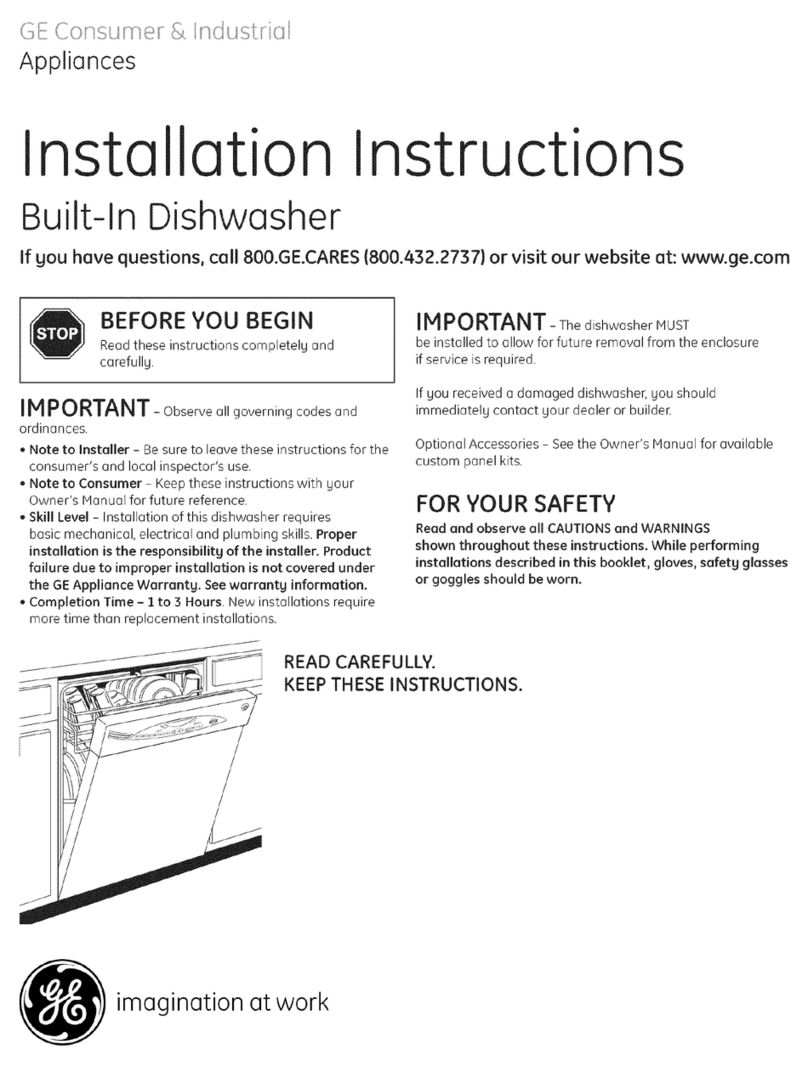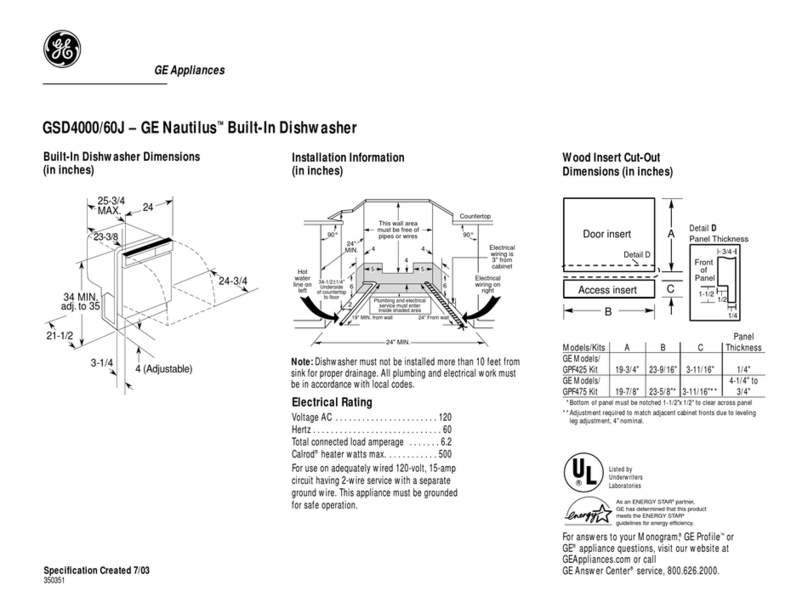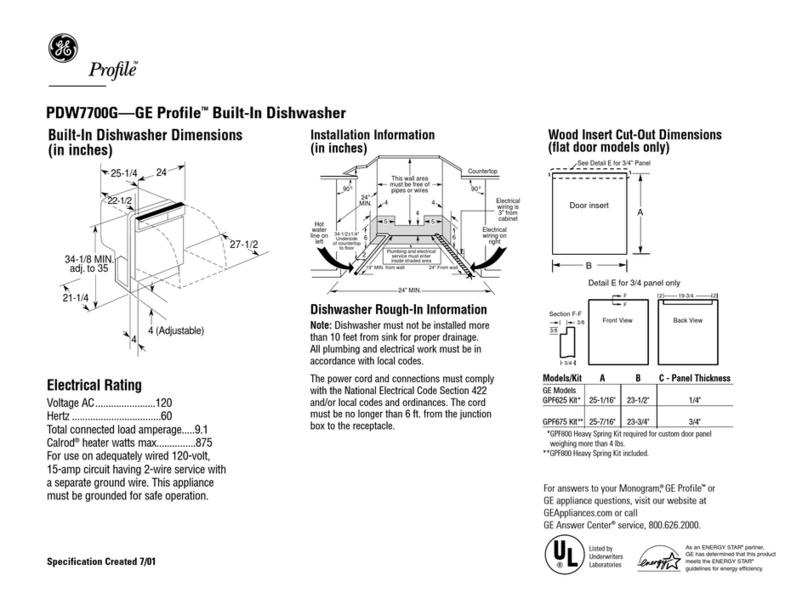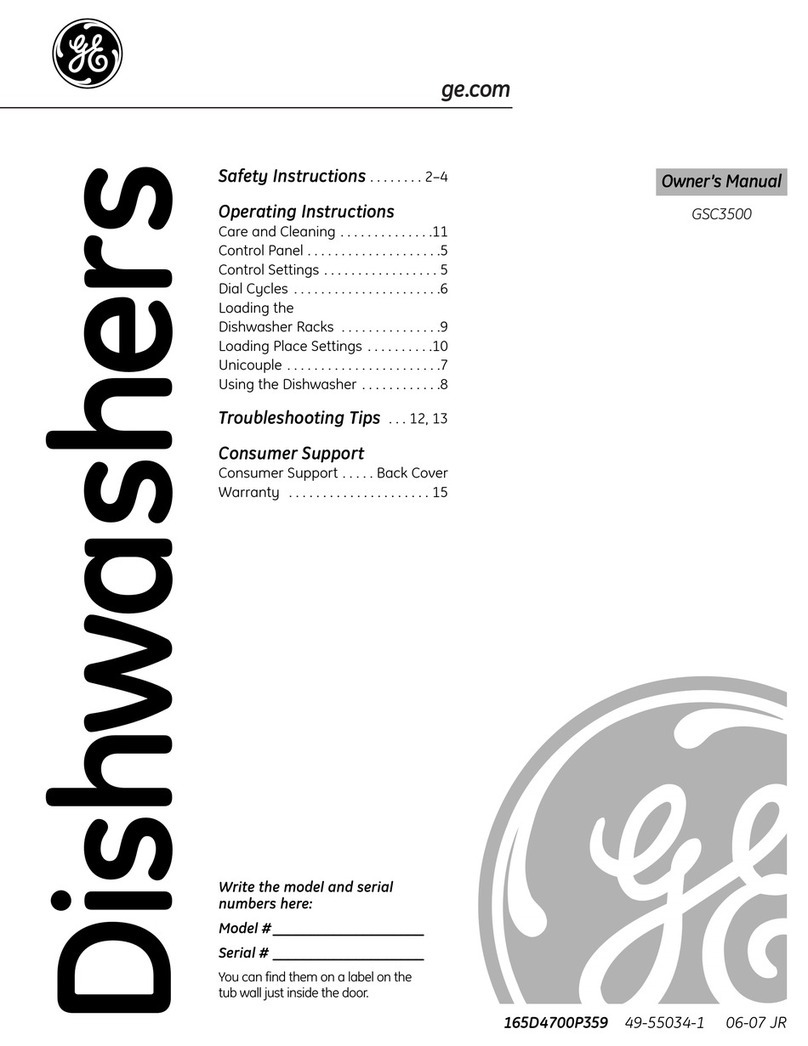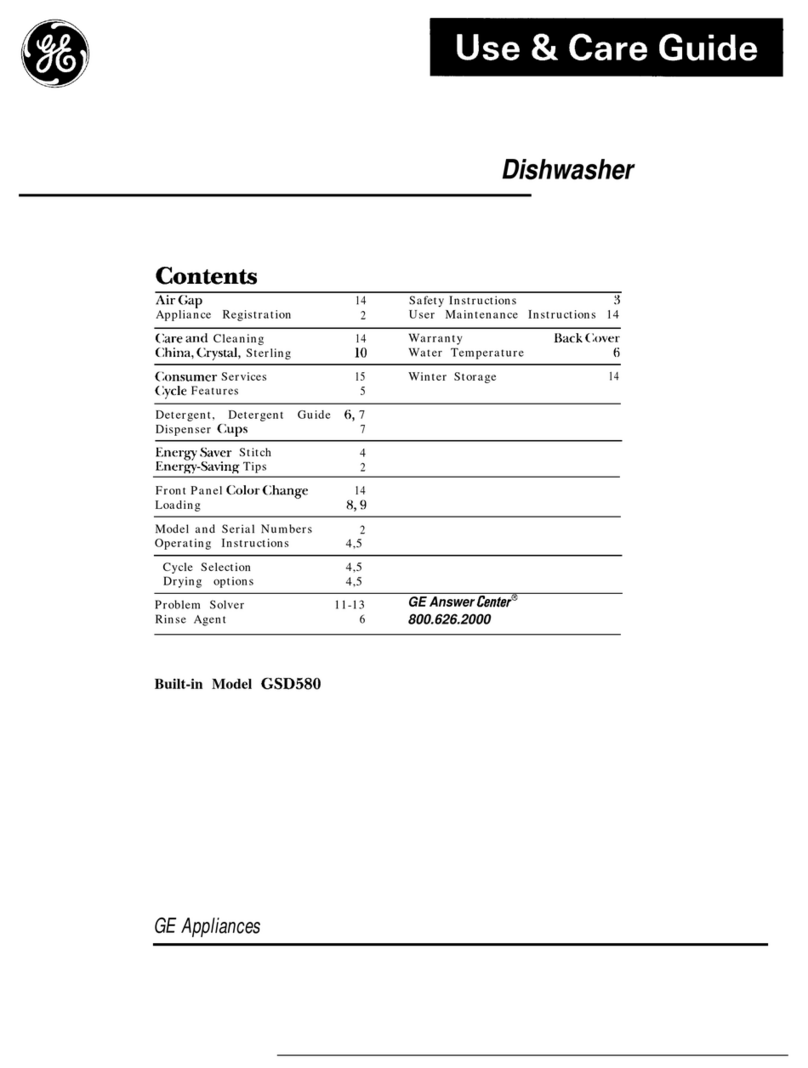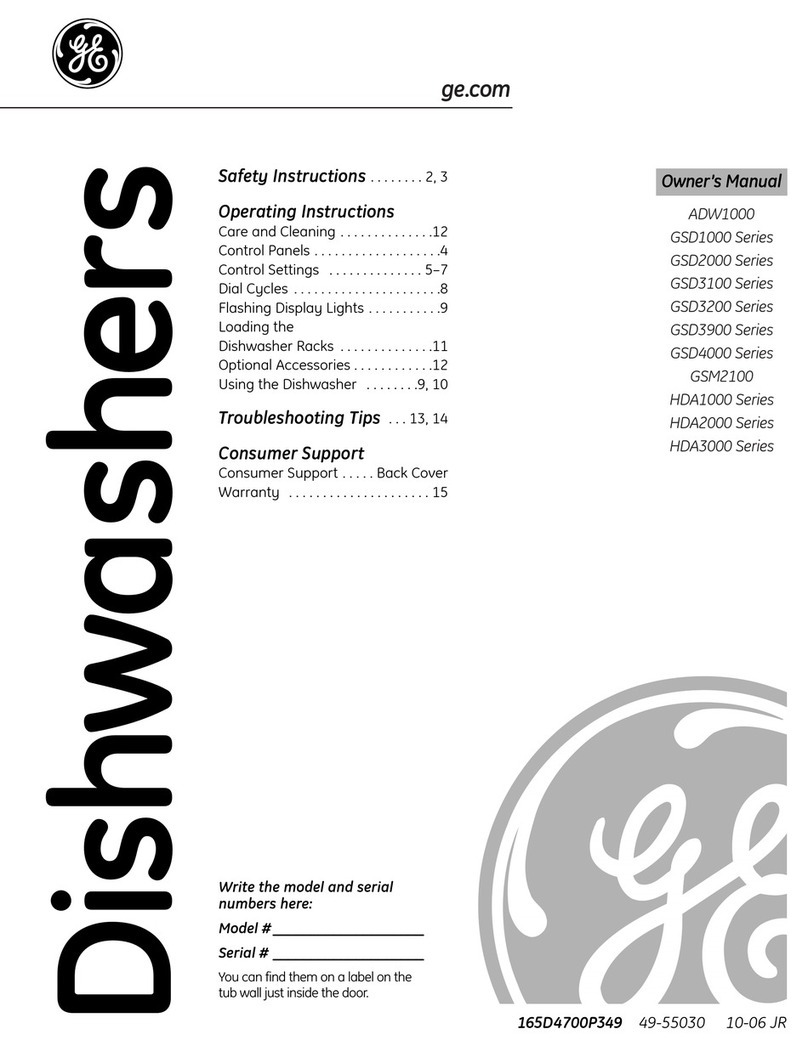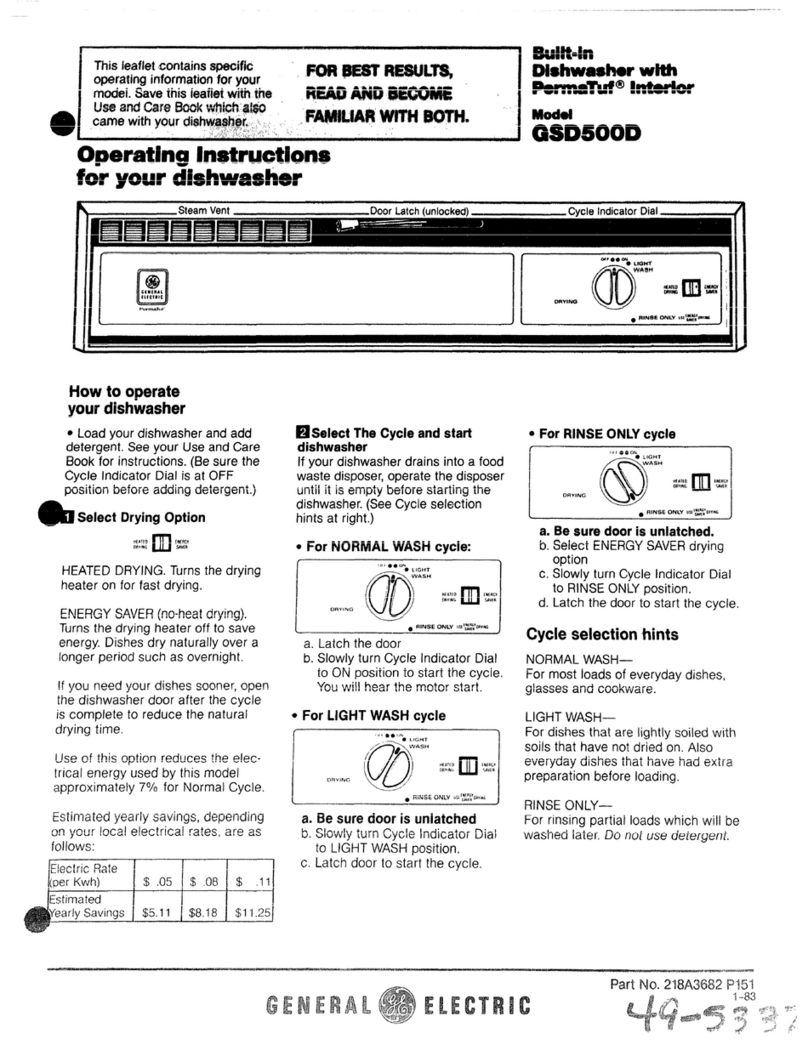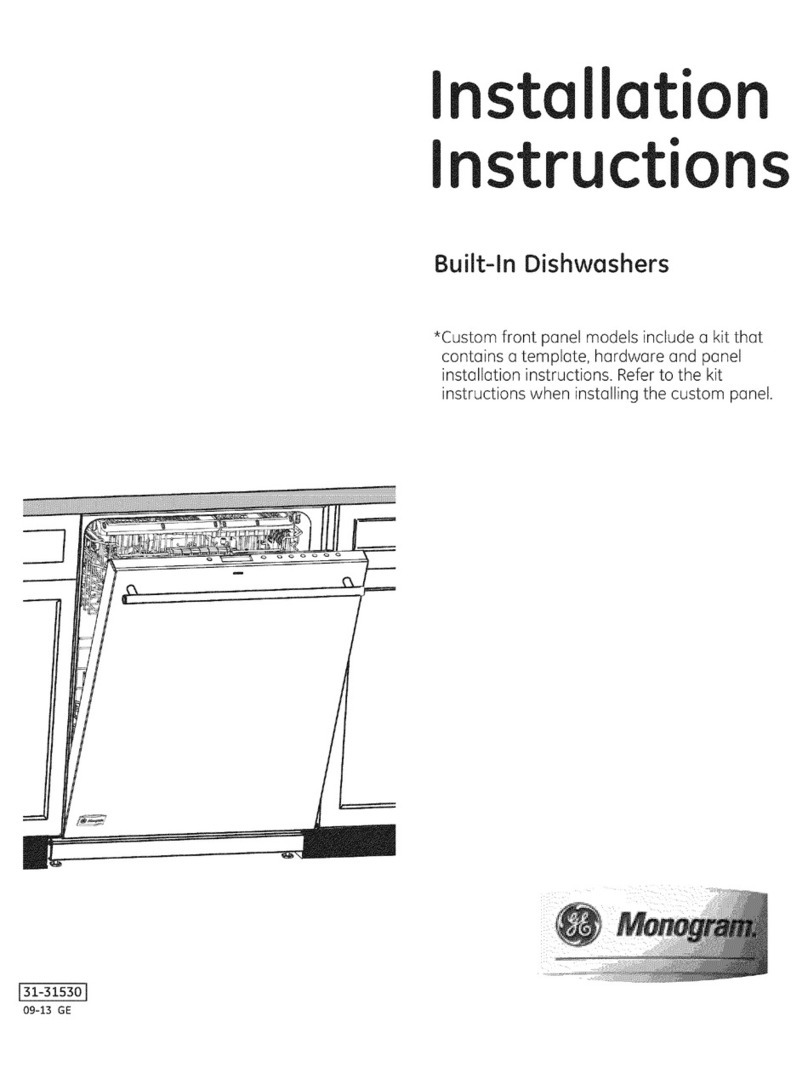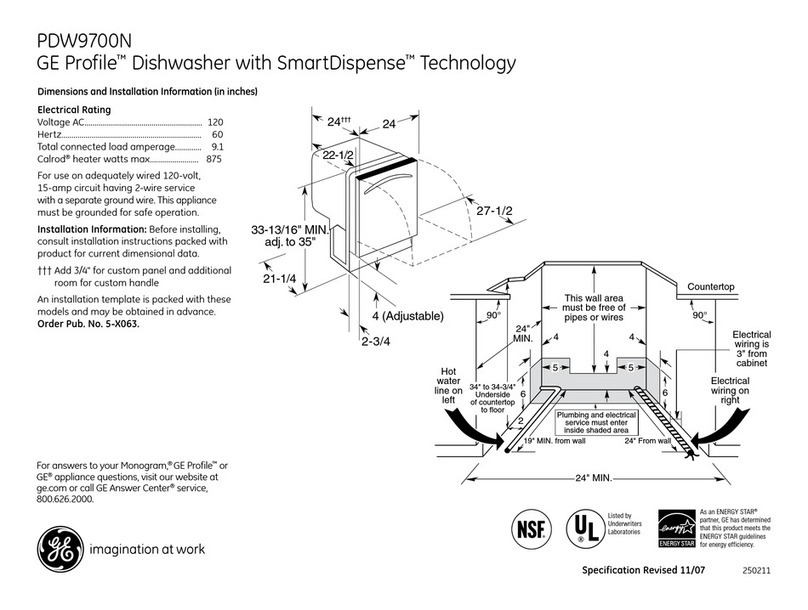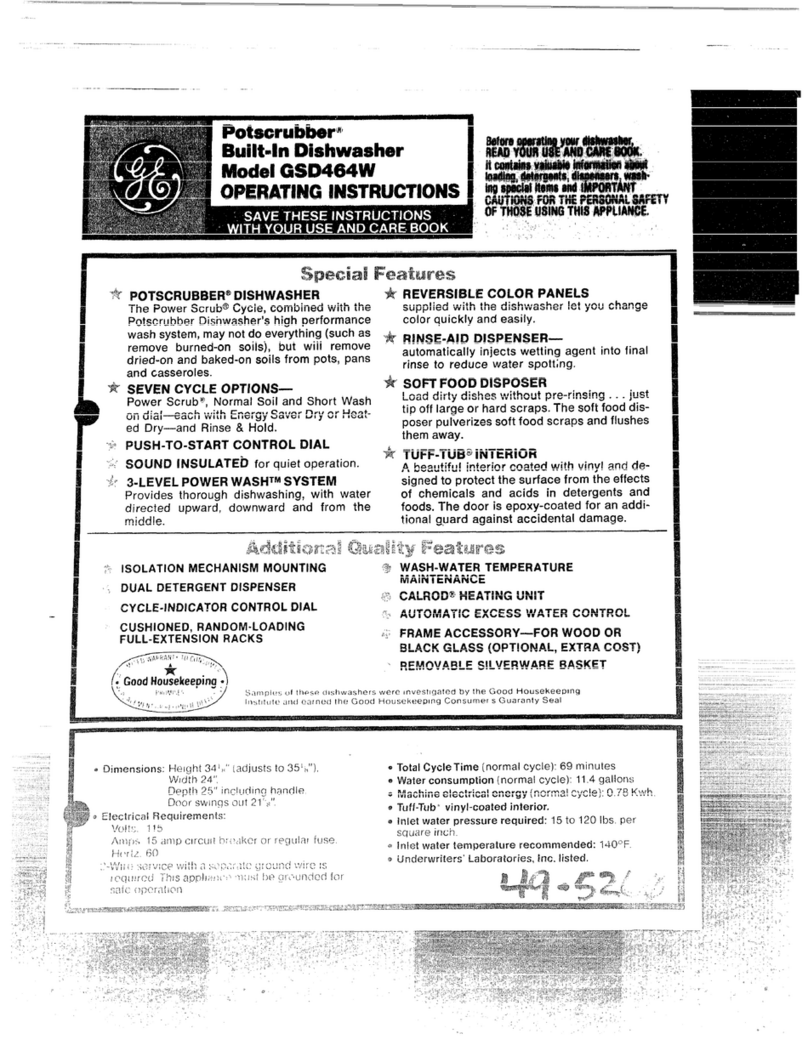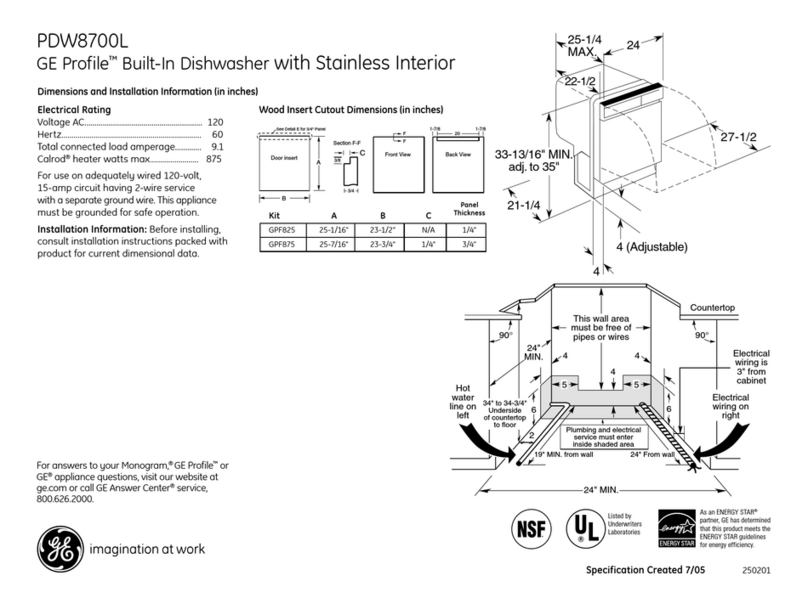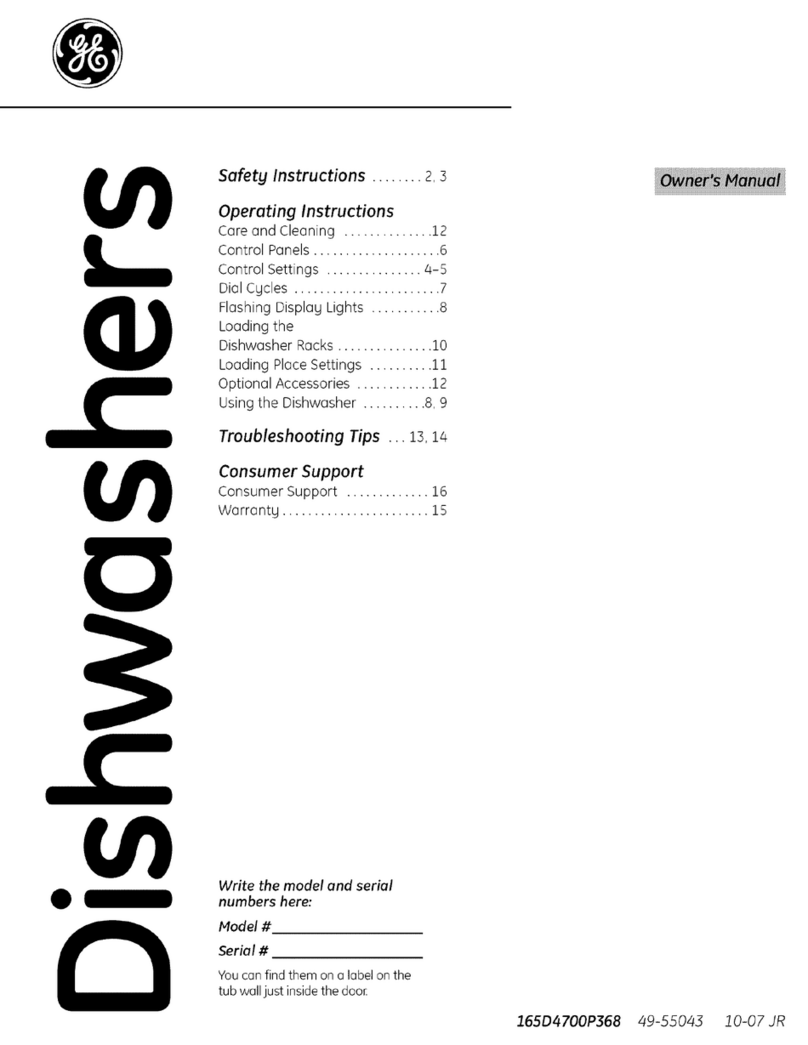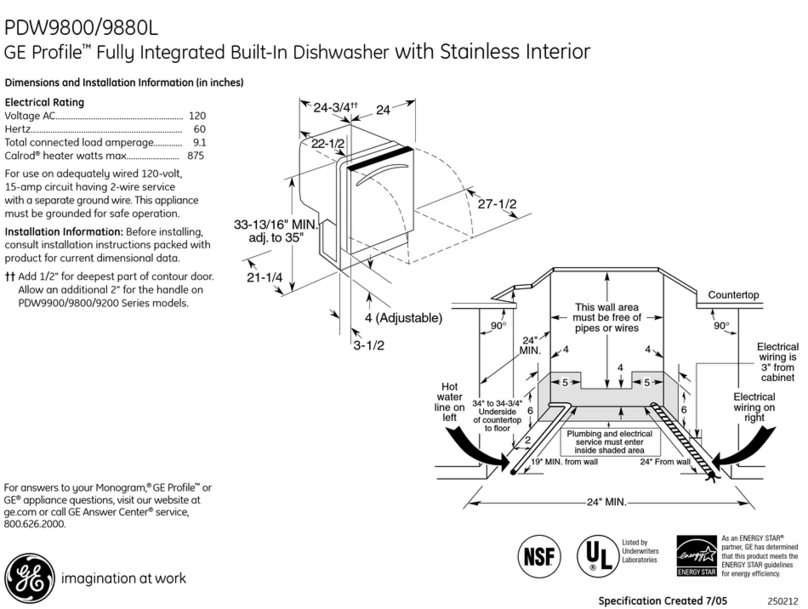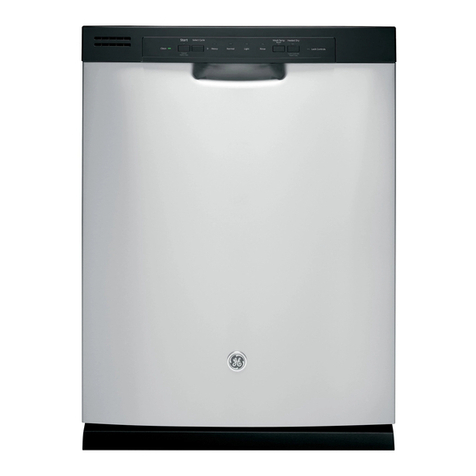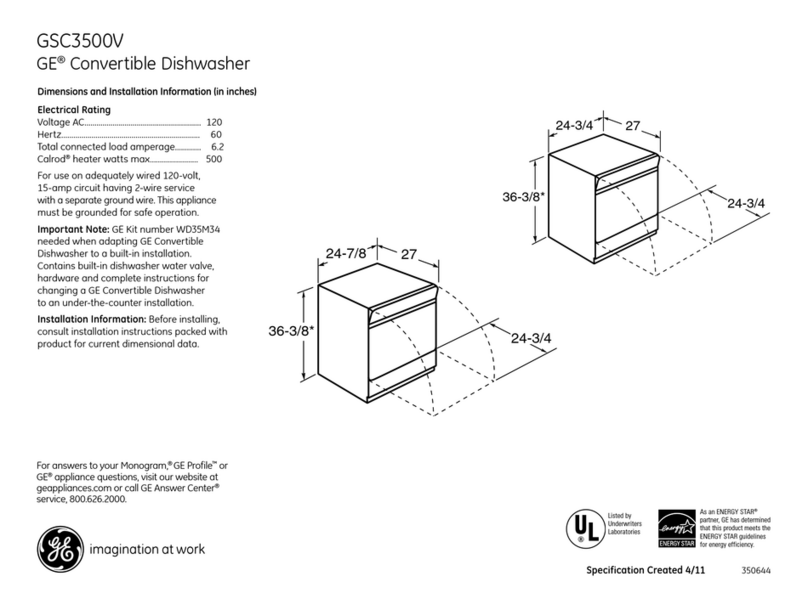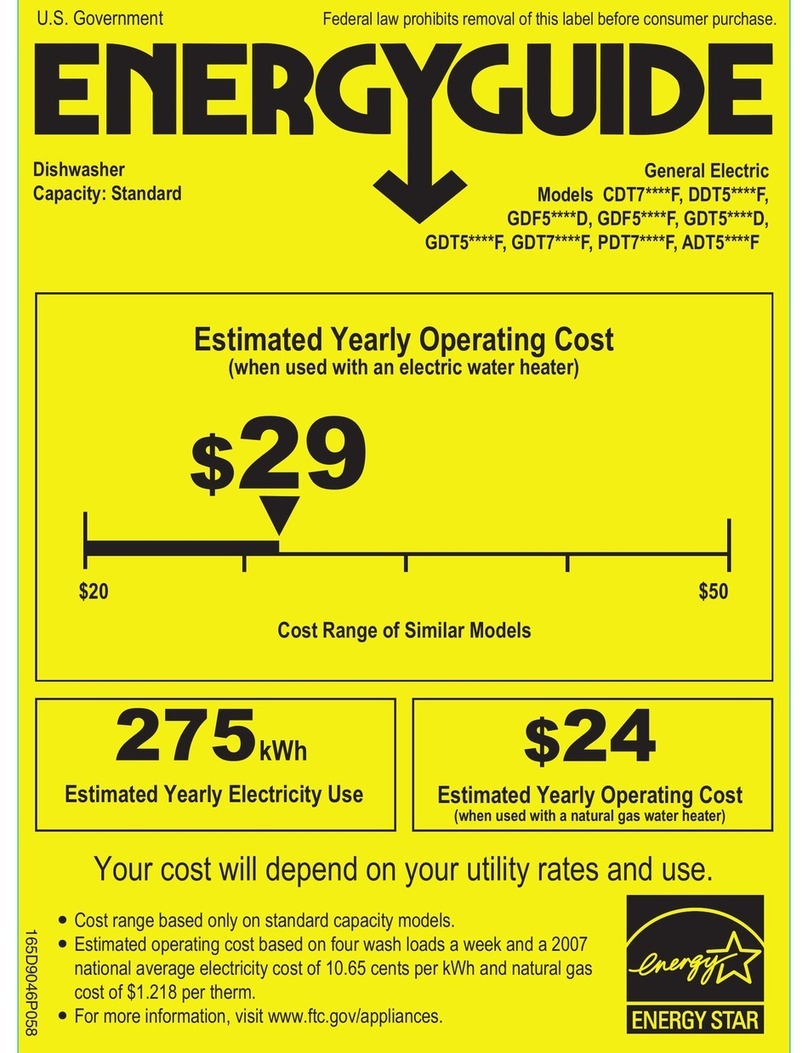
4
IMPORTANT SAFETY INSTRUCTIONS
READ ALL INSTRUCTIONS BEFORE USE
SAVE THESE INSTRUCTIONS
WARNING! WATER HEATER SAFETY
Under certain conditions, hydrogen gas may be
produced in a water heater that has not been
used for two weeks or more. HYDROGEN GAS
IS EXPLOSIVE.
If the hot water has not been used for two weeks
or more, prevent the possibility of damage or injury
by turning on all hot water faucets and allow them
to run for several minutes. Do this before using any
electrical appliance which is connected to the hot
water system. This simple procedure will allow any
built-up hydrogen gas to escape. Since the gas is
flammable, do not smoke or use an open flame or
appliance during this process.
WARNING! For your safety, the information in this manual must be followed to minimize the risk
of fire or explosion, electric shock, and to prevent property damage, personal injury, or
death.
This dishwasher must be properly installed and located in accordance with the Installation
Instructions before it is used. If you did not receive an Installation Instructions sheet with
your dishwasher, you can receive one by visiting our website at monogram.com.
• Connect to a grounded metal, permanent wiring
system; or run an equipment-grounding conductor
with the circuit conductors and connect to the
equipment-grounding terminal or lead of the
appliance.
• Improper connection of the equipment-grounding
conductor can result in a risk of electric shock.
Check with a qualified electrician or service
representative if you are in doubt whether the
appliance is properly grounded.
• Dispose of discarded appliances and shipping
or packing material properly.
• Do not attempt to repair or replace any part
of your dishwasher unless it is specifically
recommended in this manual. All other servicing
should be referred to a qualified technician.
• To minimize the possibility of electric shock,
disconnect this appliance from the power supply
before attempting any maintenance.
NOTE: Turning the dishwasher off does not
disconnect the appliance from the power supply.
We recommend having a qualified technician
service your appliance.
• Refer to installation instructions for proper
grounding.
• Consulte las instrucciones de instalación para
efectuar una adecuada conexión a tierra.
PROPER INSTALLATION AND MAINTENANCE
¡ADVERTENCIA! Para su seguridad, debe cumplirse con la información de este manual a fin de
minimizar el riesgo de incendio o explosión, descarga eléctrica y para prevenir
daños a la propiedad, lesiones personales o la muerte.
¡ADVERTENCIA! SEGURIDAD DEL CALENTADOR DE AGUA
Bajo ciertas condiciones, puede producirse gas de
hidrógeno en un sistema de agua caliente que no se
ha usado durante dos semanas o más. EL GAS DE
HIDRÓGENO ES EXPLOSIVO.
Si el agua caliente no se ha utilizado por dos
semanas o más, evite la posibilidad de daños o
lesiones abriendo todos los grifos de agua caliente
y dejándolos correr durante varios minutos. Haga
esto antes de utilizar cualquier aparato eléctrico que
se encuentre conectado al sistema de agua caliente.
Este simple procedimiento permitirá que se libere
cualquier clase de acumulación de gas de hidrógeno.
Ya que el gas es inflamable, no fume o utilice una
llama abierta o un aparato durante este proceso.
WARNING! Do not touch the heating element during or immediately after use.
ADVERTENCIA! No toque el elemento calentador durante el uso o inmediatamente después de
finalizar el uso.
